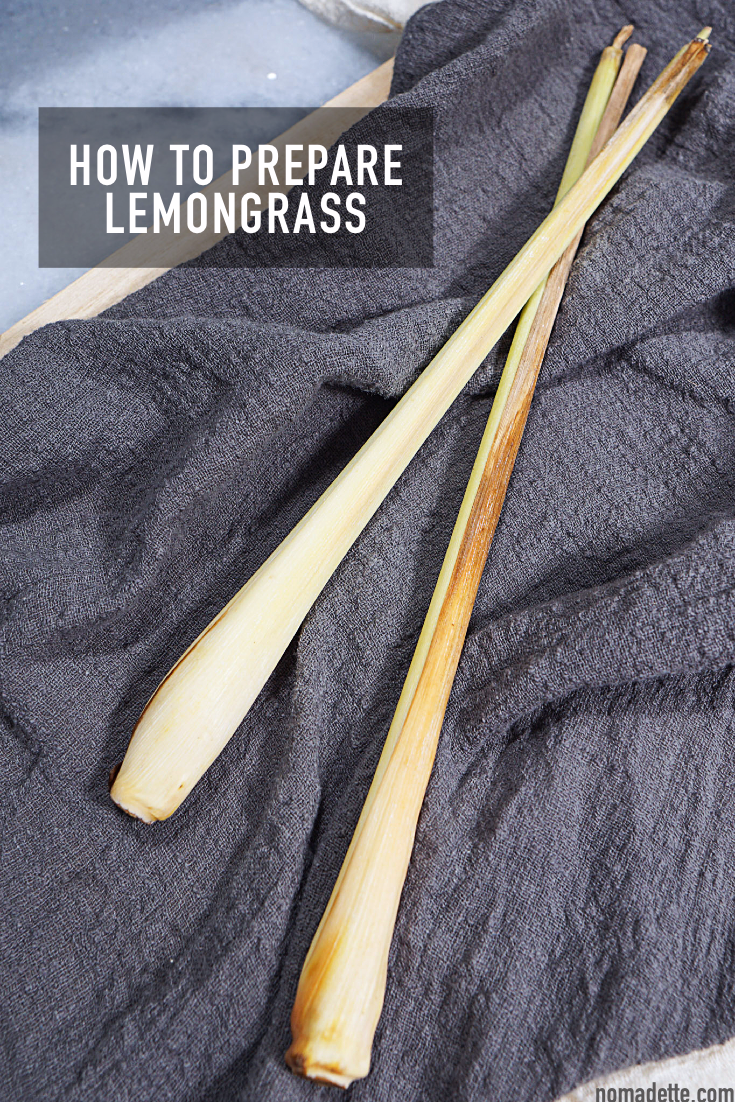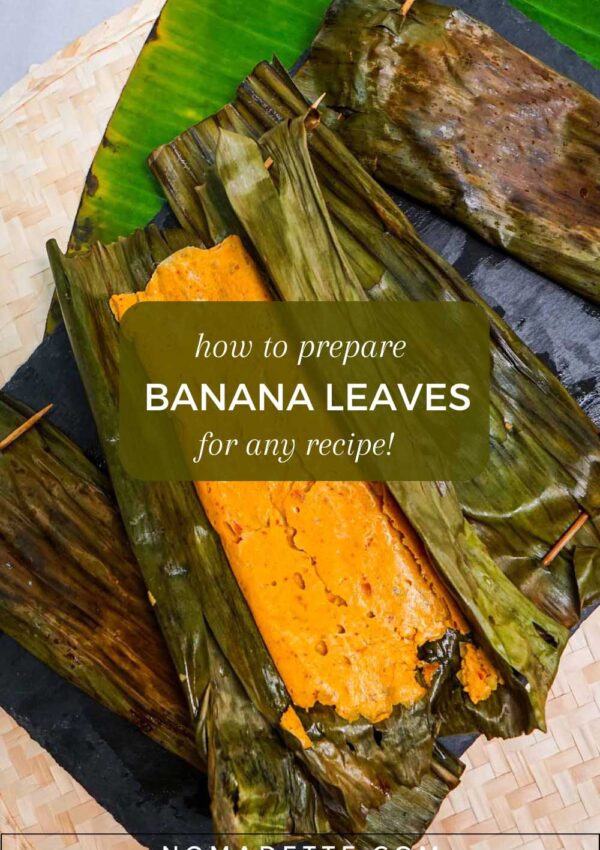
Lemongrass is a stalk herb that is known for its aromatic, citrusy scent and flavour. It is used extensively in plenty of cuisines in Southeast Asia. I use A LOT of lemongrass in my cooking. Come back to this post anytime for more details and how to prepare lemongrass for cooking.
It is a key pantry staple for the Malay kitchen. It’s also used in Thai, Vietnamese and Indonesian cuisines.
Lemongrass cannot be consumed as is. It is a very fibrous and tough herb that needs to be prepared before cooking.
For most of my recipes, lemongrass is prepared two ways: bruising the whole stalk, or cutting it into smaller pieces.
How to Bruise Lemongrass
This is my go-to method of using lemongrass. Since it is left whole, it can be easily fished out from the dish at the final stage. This is commonly used in stir fries, and well as for stews and soups.

1. Remove the top half of the lemongrass. The top half has very little flavour, so it is quite useless in terms of flavouring. The bottom half stores the bulk of flavours. Also, it’s quite cumbersome to fit the whole long stalk in most pans I imagine.
2. Now, smash the lemongrass to release the flavours. I always use a pestle to easily pound it. You can also use the back of the knife, or bottom of the knife handle – although do be careful with this! You can also use a heavy bottomed pan to pound it.
3. The fragrance should immediately emit. The lemongrass stalks should reveal some fibres. Lemongrass is bruised and ready for use.
A fraction of my recipes that use bruised lemongrass:
How to Slice Inner White Core of Lemongrass
This method is used more for blending into a paste to be used for cooking. It is not used as is, since lemongrass is very fibrous and tough. Not exactly fun to eat.

1. Remove the top half of the lemongrass, and the bottom hard bulbous root.
2. Remove the hard outer light green layer of stalk. You should get a white inner core.
3. Slice this inner core. It should be able to cut easily as it is softer. It can be fibrous – position the knife at an angle and it should cut the stalks easier.
Some of my recipes that requires the inner core of lemongrass:
While most recipes would require finely minced lemongrass, I find recipes that require grilling fare better with chunkier lemongrass pieces, such as Gai Yang Thai Grilled Chicken. The bigger chunks burn much lesser and turn bitter, which is sometimes the case with oven roasted or grilled recipes that require longer cook times. In this case, slice the lemongrass stalks to longer chunks, and roughly chop or pulse in a food processor.
Lemongrass Paste
This lemongrass inner core is typically turned into a paste before using it in a dish. It is usually blended together with onion and garlic. In Malay cooking, these can be added to dried chilli paste to enhance the flavours.
To turn this into a paste, simply add the lemongrass to a blender or a food processor with a bit of water to ease the blending process. You can also use a mortar and pestle to pound the lemongrass to a paste as well, although it will take some muscle.
What to do with the Top Half of Lemongrass?
Keep this! Even though it’s not as flavourful as the bottom half, it still has flavour. It can still be used to impart flavour especially in soups and stews. If you’re using lemongrass for soups and curries, you can also smash the top half and add to the dish with the bottom halves. To be frank, I rarely do this since the dish may get cumbersome with too many stalks of lemongrass swishing about.
Instead, I would stash these in my fridge (along with other herbs and aromatics that do not make it into regular dishes) for later use in my chicken stock, or when I’m making chicken soup.
Some recipes that you can use these in:
How to Store Lemongrass?
They keep well in the fridge for a long time, up to two weeks. To keep for longer, simply stash in the freezer. Defrost completely before using. It might soften slightly, but it’s still fine to use.
Alternatives to Lemongrass
I receive this question the most for my recipes, especially for some of you who are not based in Southeast Asia. Unfortunately there is no close alternative to lemongrass.
In a pinch, you can use Kaffir Lime Leaves – although if you don’t have access to lemongrass due to geography, chances are lime leaves are not easily available to you either.
You can also use lime or lemon juice to imitate the citrus flavour, although it will not taste the same. You can also use the zest of a lime or lemon.
In some cases, you can also use dried lemongrass, although it does have its limitations.
Can I use dried lemongrass?

Yes, to a capacity. It cannot be used in stir-fries. They impart some flavour, but not enough. Plus, they stay dry. You end up with dry, straw-bits in the dish which is not pleasant at all to eat.
Dried lemongrass will fair better in soups or stews that require longer times to cook. This will allow the dried lemongrass to rehydrate and soften.
You can simply add the dried lemongrass in, or pack these in soup spice sachets or tea bags. For one lemongrass stalk, use a teaspoon of dried lemongrass.
I’ve used these in Tom Yum soups to good effect. I add a couple tablespoons of dried lemongrass to a tea bag or soup spice bag and left it in the tom yam to infuse. Once the dish is done, I would just fish the sachet out of the soup, without any of the lemongrass bits floating around.
Otherwise, I stick to my fresh lemongrass and only use the dried lemongrass to make teas, where I can easily strain out the dry leaves.
There is also lemongrass powder, but this is not as easily available as dried lemongrass. Personally I’ve never come across them. If you’re able to find it, then get those instead! With the powder form, you don’t have to deal with any unpalatable dry fibres in the dish.
Recipes with Lemongrass
A lot of my recipes use lemongrass! Try any of these first:





Leave a Reply